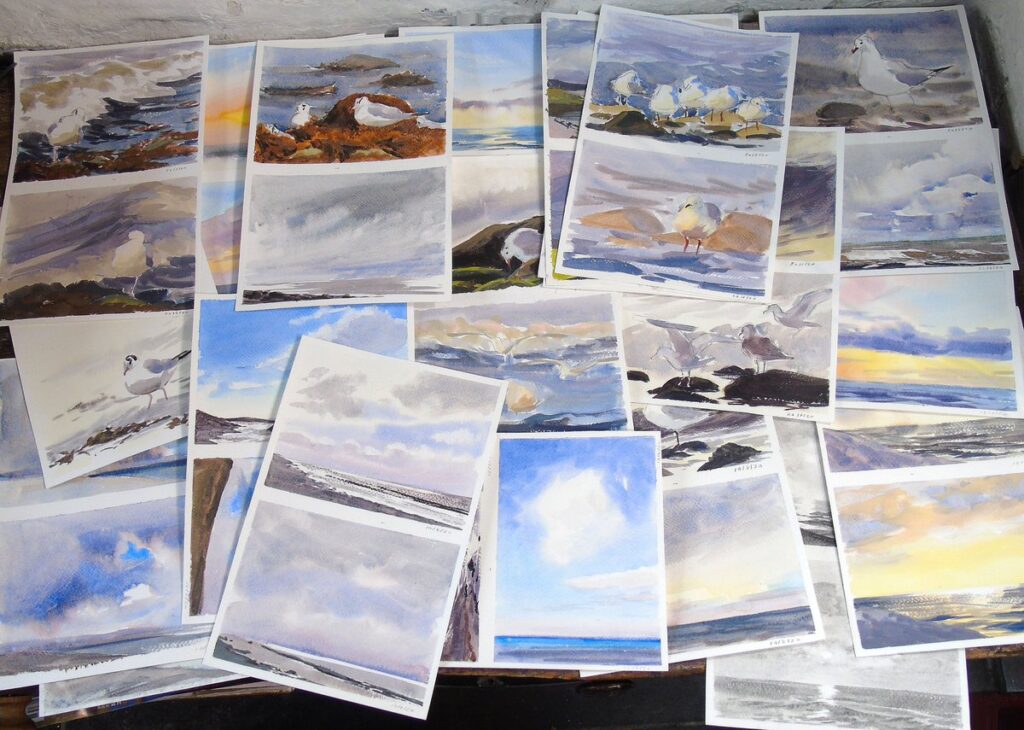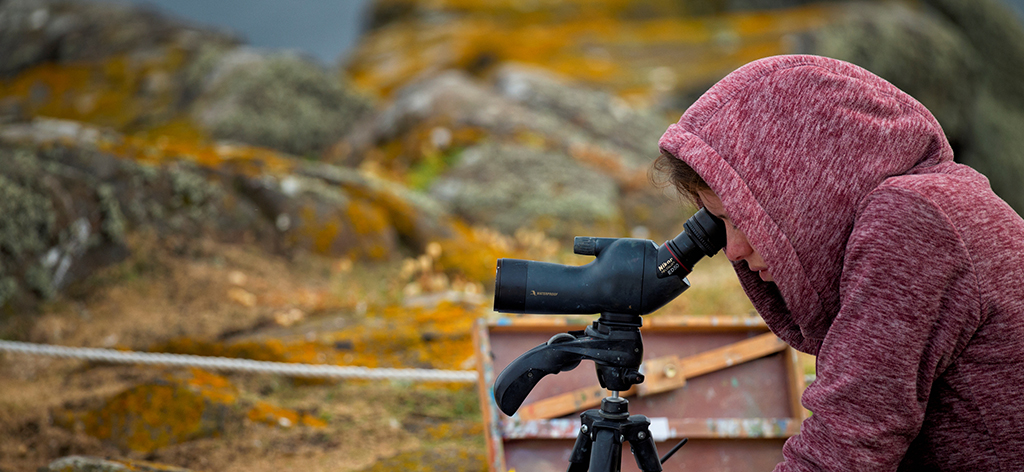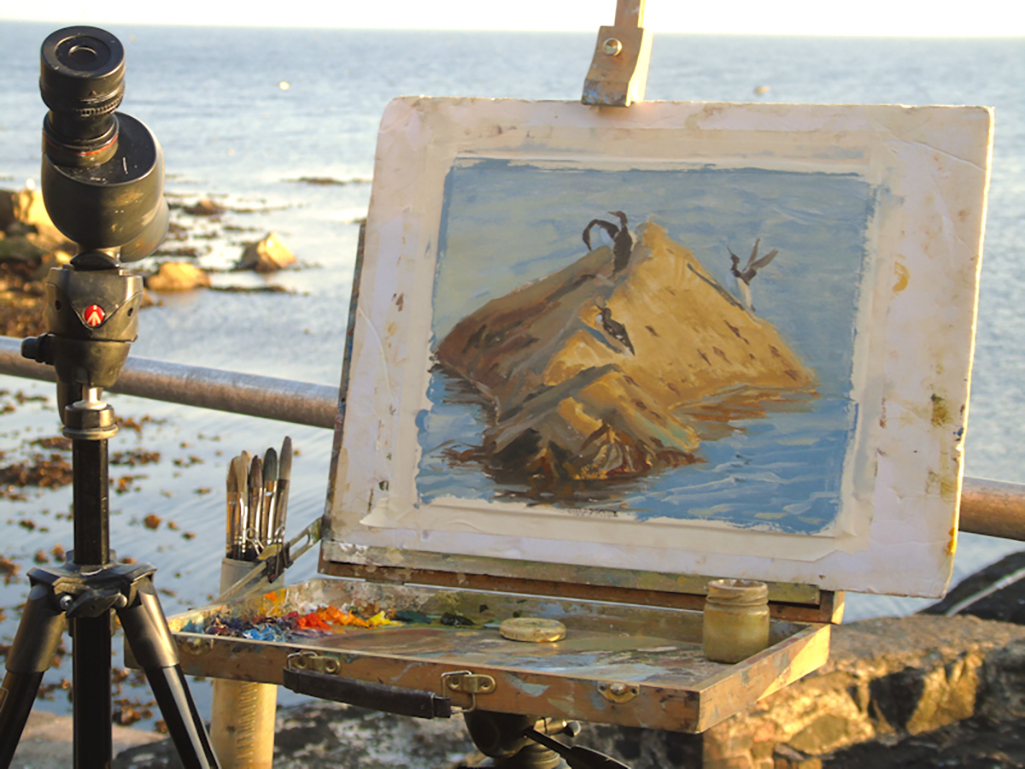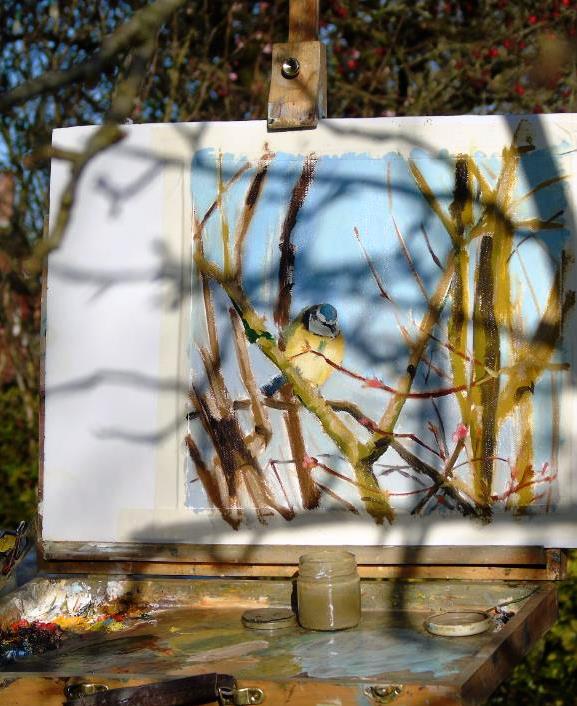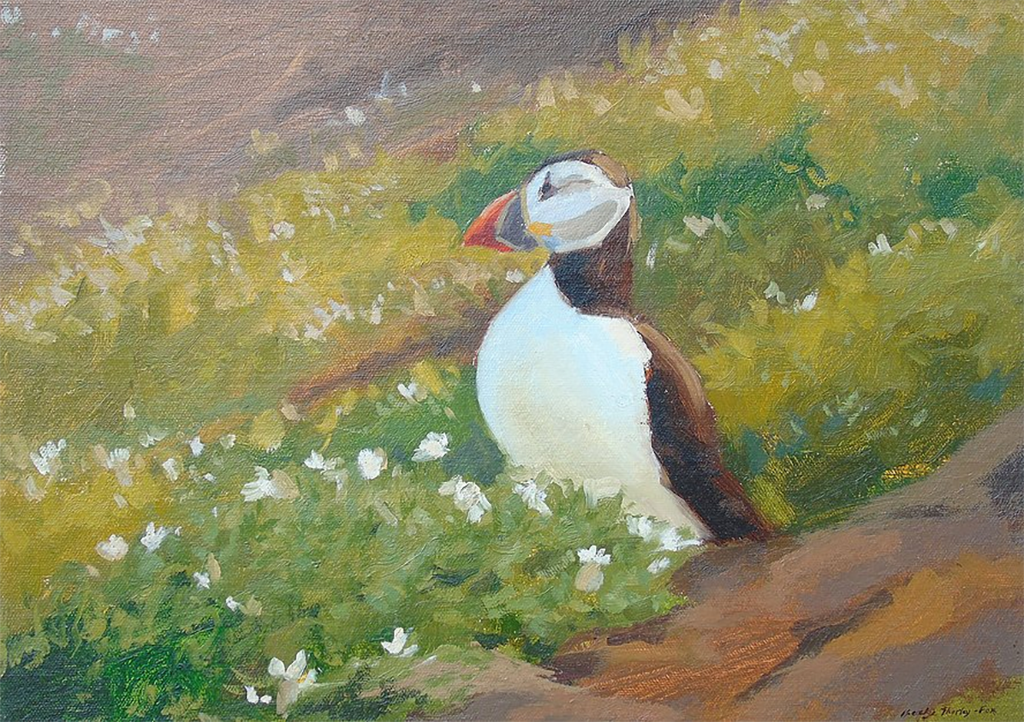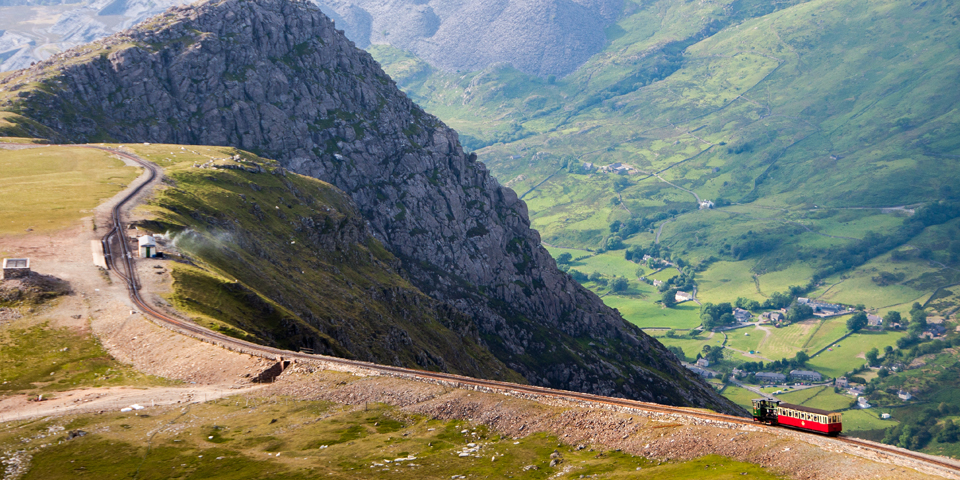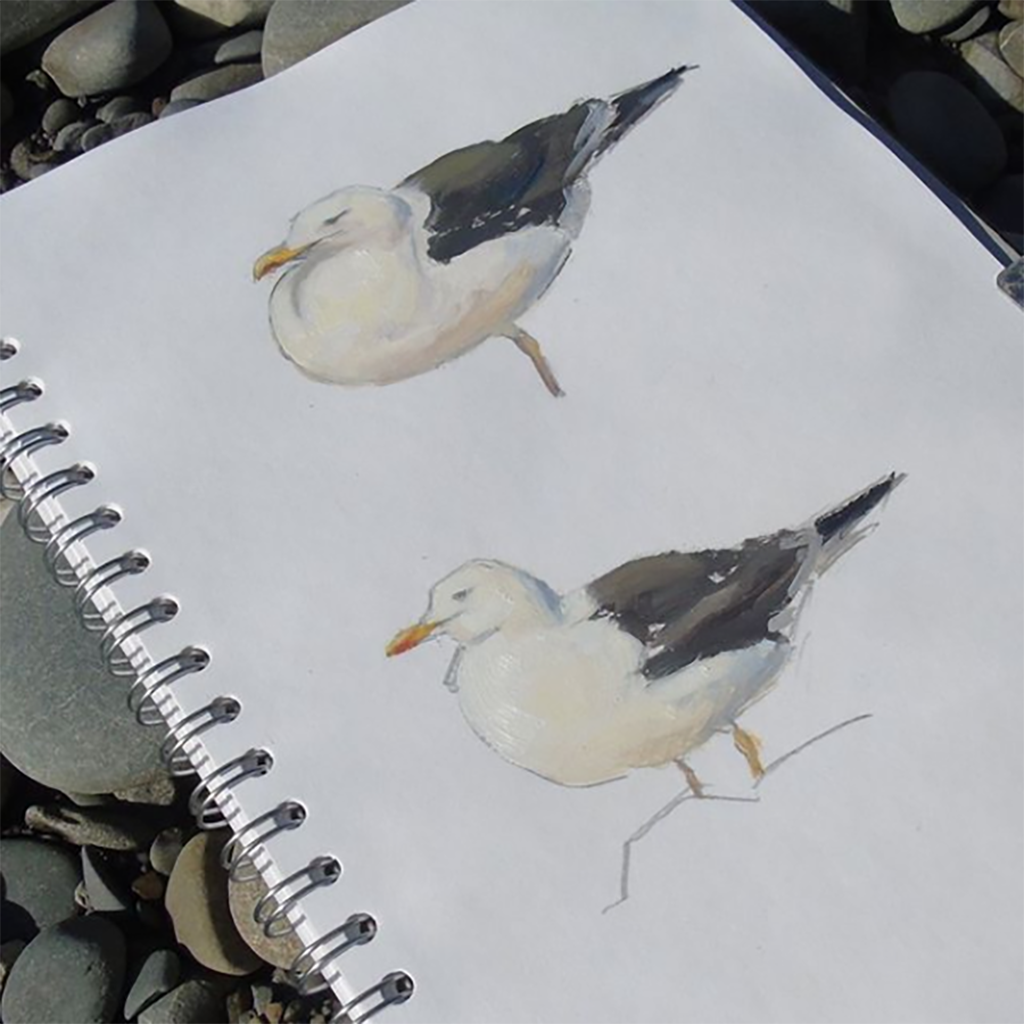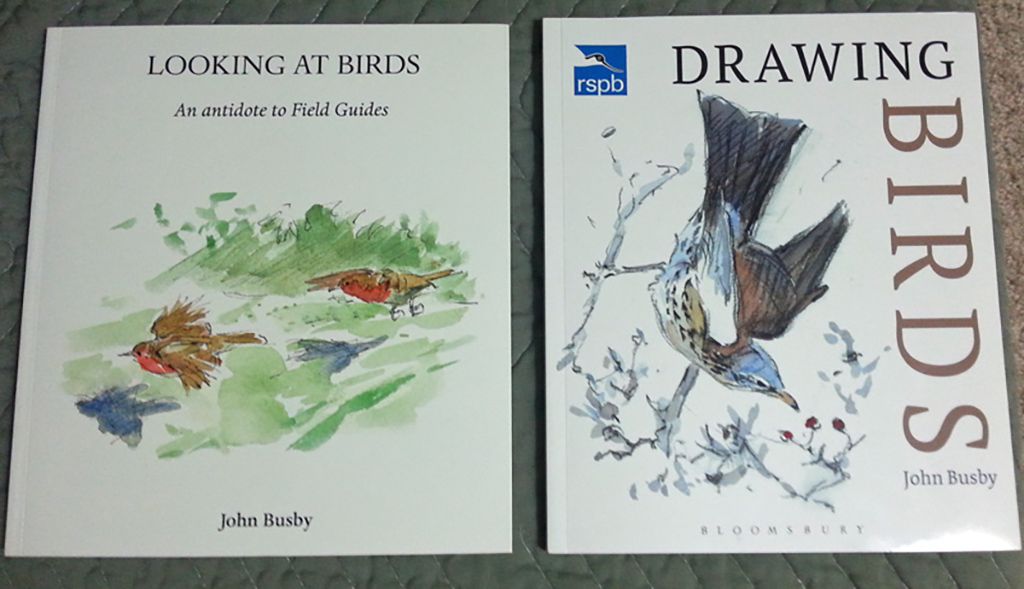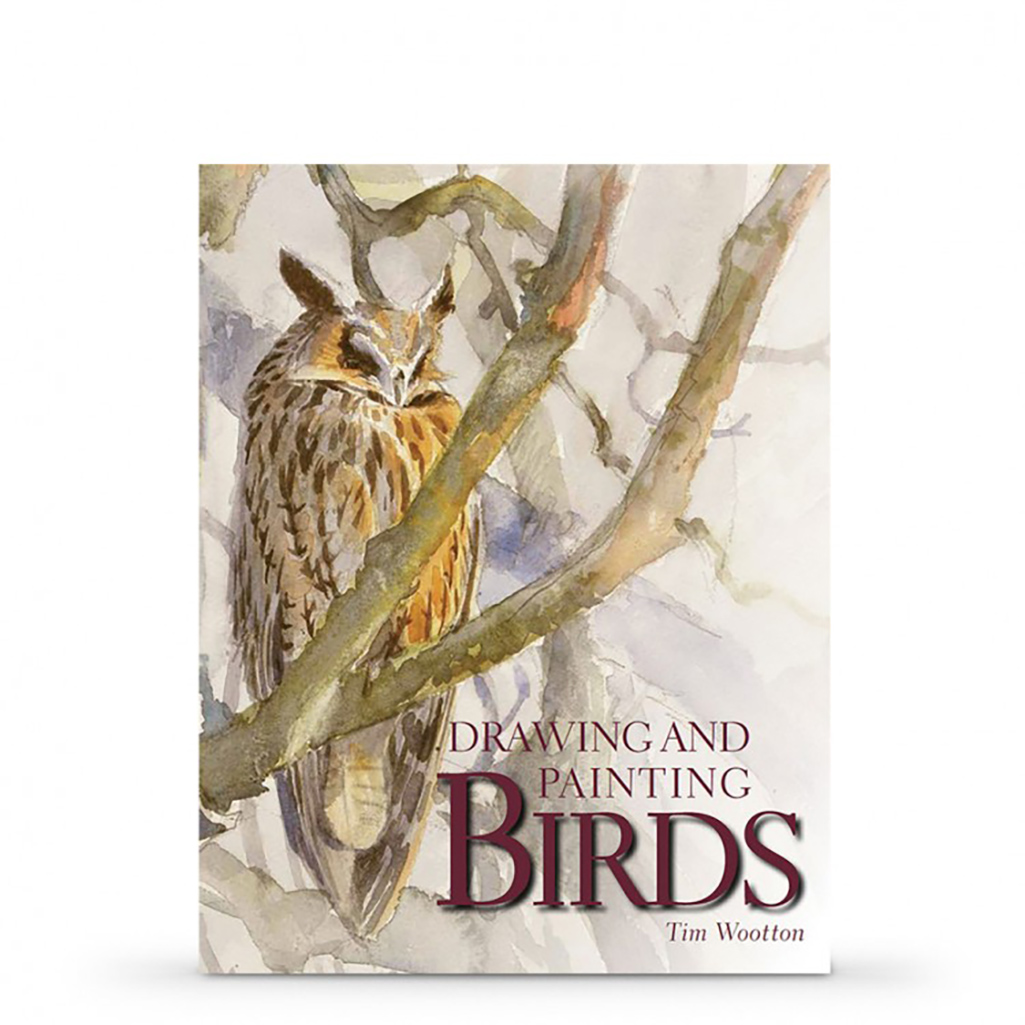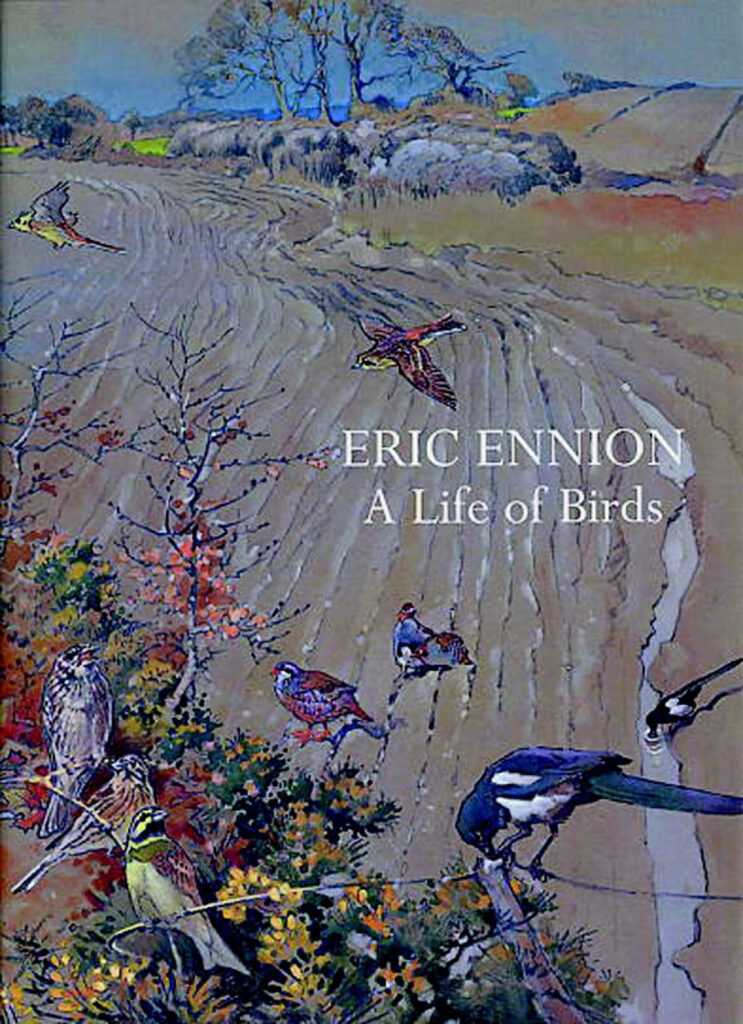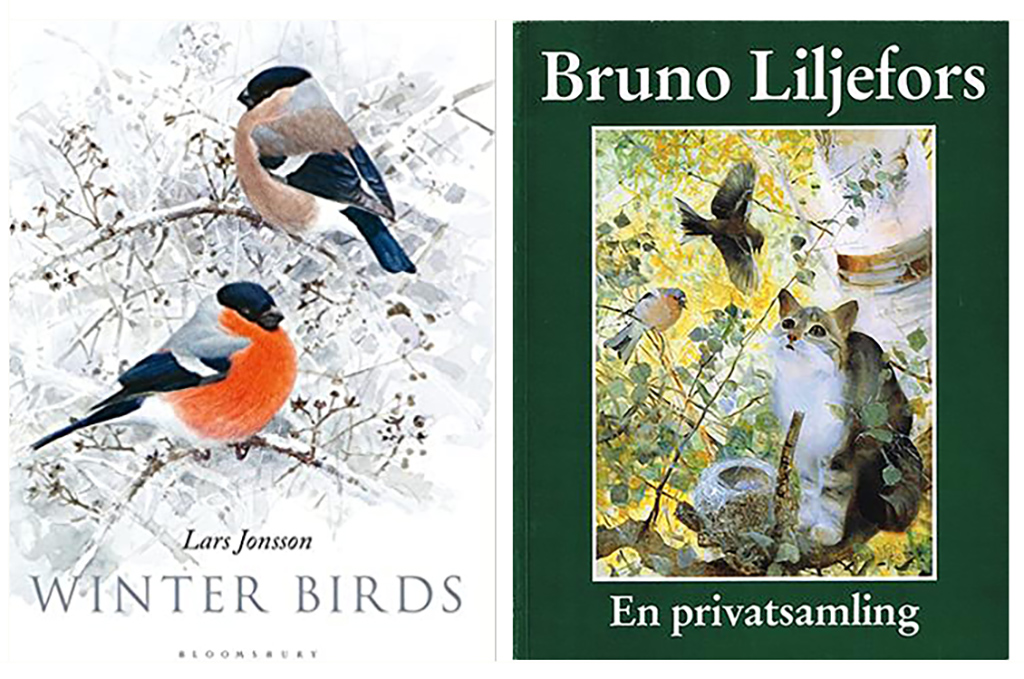Born in Cheshire, Becky moved to the West coast of Wales in 2010 where she finds a vast source of inspiration in the wild landscape, from the mountains to the rugged coastline and offshore islands. Working directly from nature has enabled her to develop a thorough knowledge of the behaviour and visual language of wildlife in its chosen surroundings.
– What are the biggest challenges with plein air painting?
My biggest challenge has been carrying numerous wet oil paintings around on long days out or over the course of week long residencies on islands. My solution has been to make lightweight boxes with slots in to hold wet work. I often paint on loose canvas sheets cut from a roll rather than carrying numerous heavy panels. I then tape these to lightweight boards, (such as foam, card or correx). Keeping equiptment lightweight is important, especially if you are walking far!
This is one of the main reasons why I recently started exploring both watercolour and gouache- both together and separately. It’s a very different discipline to working with oils but I’m really excited by their potential, especially for producing numerous quick studies. Having work that will dry on the spot really helps, I did 20+ mini studies on my first outing with my new paints, on my mission to familiarize myself and enjoying the freedom of unlimited painting opportunity!
The other more obvious challenge is the weather! Here in Wales it is always changing and autumn can be particularly challenging due to the often strong winds. I live very close to the coast and am regularly out painting along the weather worn shores in all seasons. My down filled parka coat with a big hood is essential for keeping warm, I will also throw on skiing trousers for painting on the spot as it gets very cold otherwise once you’re stood still.
On one occasion after painting the sunset I’d walked a long walk back to my car carrying one of my large foam boards with paintings taped onto it as my box was now full. As I went to place it into the boot of my car the strong wind whipped it up and printed the sunset painting onto my face! Lightweight is not always good in windy conditions!
– Tell us please about the equipment you use.
I like to work with a pochade box and a small telescope. I recently rebuilt a couple more pochade boxes out of correx and wood which are super lightweight and strong. To overcome the problem of wind I attached tent pegs to the bottom of my easel legs which worked a treat! It stood the test of Bardsey Island in gale force winds!
– Do you have any life hacks and tips for those who want to try their hand in painting wildlife?
I would suggest starting with bigger birds that are used to people, say at your local park, lake or zoo. Begin without the need for optics as this is an added challenge. Start by capturing the basic large shapes, keep your arm loose and let the lines flow, keep your eyes on your subject rather than fretting about your drawing. Aim to capture gestural movements. Then study one aspect at a time, such as beaks, feet, wings etc, to slowly build up your knowledge of a species, this will help you fill in the blanks when you seize those fleeting moments. Be patient, it takes time to develop the skills needed to capture birds/ animals direct from life but the rewards of trying will keep you going! Once you’re hooked there’s no going back! Inspiration becomes endless when you work from life, as does your growth and development as a painter.
I wrote an article on how to capture wildlife in oils from life for The Artist Magazine. This is available as a back issue to buy online.
– How do you choose a subject?
I choose subjects that interest me and are close to hand so that I can keep revisiting, in order to get to know them better.
– It seems that the plein air artist has to paint really quickly. Is that so?
A plein air artist does have a time pressure, as light conditions change and subjects move fast! This can be a good thing as it forces you to work intuitively with spontaneous marks which keeps work fresh and exciting. It is important to not dive in to quickly though, drawing and planning the basic composition is essential, as is establishing your value range.
– Do you make studio works based on the sketches? (plein air studies)
I do only on very rare occasions, I prefer to work plein air nearly all of the time. I will sometimes bring in my more ambitious plein air works and hang them in the studio for a while to see what additional marks are needed but most of the time I prefer to leave them untouched as nothing can replace those true marks born from the moment.
Having said this, studio work is something I wish to try in the near future. I have begun experimenting with watercolours and gouache as a means of producing more field notes that I may later develop on a larger scale that couldn’t otherwise be achieved on location due to the limited time frame. Often moments are so brief and can’t be revisited, so I would love to fully explore a painting idea in the studio. After having spent many years plein air painting I can refer more to my memory, knowledge and experience to help me relive moments in the studio.
– Have you collaborated with national parks/ wildlife organisations?
I have carried out long term artist residencies with my local RSPB nature reserve Ynys Hir. I am very fond of this reserve as it sits along side an estuary which attracts many birds. It is also set against the beautiful foothills of Snowdonia National Park which I’ve painted many times. I have also painted a large mural for the reserve which hangs in the entrance of the visitor centre.
– Why did you decide to move to the west coast of the UK?
I have always wanted to live by the sea, since childhood. I love the light, atmosphere, changing skies and the sights/ sounds/ smell of the crashing waves. I regularly visit my local spot to paint the coastal birds, here I find my favourite two subjects- the coast and birds!
– Birds feature a lot in your work, and they are really vivid, cute and full of life! What is it about them that inspires you?
I have always loved birds for as long as I can remember, I still have a sculpture of a Tawny Owl I made when I was 4. I think it’s largely about their ability to fly that has always caught my imagination.
– Do you think it is necessary for an artist to get acquainted with other painters works, in order to learn new skills and gain ideas?
Yes, I love looking to a number of artists both past and present for ideas, approaches and skills that I’m drawn to. Furthermore I just love seeing what other artists produce, everyone’s style is so unique, especially when an artist fully explores their own interests. Looking at multiple artworks by a range of artists that inspire you will encourage you to constantly explore and develop your own way of working.
– What wildlife artists could be a role model to beginners?
The ultimate books I would recommend for beginners would be the same books I referred to:
Drawing Birds, John Busby. (I have both editions as they’re both brilliant).
Drawing and Painting birds by Tim Wootton.
Eric Ennion’s books.
Charles Tunnicliffe’s books.
The Society of Wildlife artists here in the UK comprises of a great many brilliant wildlife artists whose work will inspire you. Visit https://swla.co.uk/
I also have Lars Jonsson’s books and Bruno Liljefor’s book which are all favourites.


